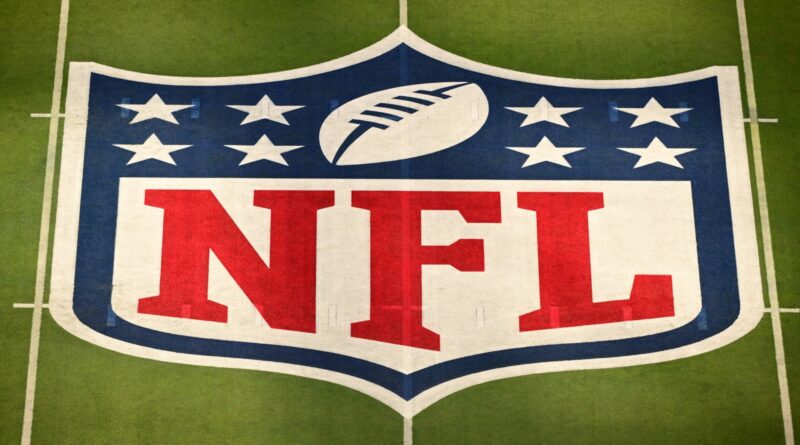What is the NFL Supplemental Draft? Explaining history, player eligibility & how pick order is determined
The NFL draft is one of the biggest events on the NFL’s offseason calendar, but it isn’t the league’s only draft.
The NFL on Tuesday will resurrect its supplemental draft, following a three-year hiatus. The event hasn’t been held since 2019 due, in part, to the COVID-19 pandemic.
But the NFL is bringing it back in 2023, with two receivers — Purdue’s Milton Wright and Jackson State’s Malachi Wideman — eligible for selection by the league’s 32 clubs. The supplemental draft isn’t quite the production of the NFL draft, but fans will undoubtedly hold an interest in it, especially if it leads to a roster addition for their favorite team.
So, what is the NFL supplemental draft? Here’s a brief history of it, and a rundown of exactly how it works.
MORE: Best players ever picked in NFL Supplemental Draft
What is the NFL supplemental draft?
The NFL supplemental draft is a summer-time draft held for players who didn’t declare for the previous NFL draft, but are otherwise draft-eligible. The draft alternative originated in 1977, and was meant to accommodate players who either missed the NFL draft filing deadline or who faced unexpected eligibility issues for the upcoming college football season.
The supplemental draft hasn’t always been a big storyline for the NFL. The reasons for this are simple: Teams aren’t required to make picks in the supplemental draft; the draft is not televised; and it is completed quickly (about 10 minutes). It takes longer to report the results, but it is largely an administrative process on the part of the NFL.
Still, some strong players have come into the NFL’s workforce from the supplemental draft, including Pro Football Hall of Fame receiver Cris Carter and quarterback Bernie Kosar. The latter’s selection in the 1985 NFL supplemental draft is the most notable pick in the alternative draft’s history.
Why? Because Kosar and his agent, A.J. Faigin, effectively schemed to have him avoid the normal NFL draft in the hopes he could play for his hometown team, the Cleveland Browns. Kosar’s efforts were successful, but created a great deal of drama across the NFL (especially from the Vikings and Oilers, who had hoped to land the Miami quarterback in the 1985 NFL Draft).
Even still, the NFL has continued to hold a supplemental draft since its inception in 1977. The process was put on a three-year hold due, in part, to the COVID-19 pandemic, but it is returning to the July calendar in 2023.
MORE: Ranking all 32 draft classes from best (Steelers) to worst (Jets)
How does the NFL supplemental draft work?
The NFL supplemental draft isn’t all that different from the normal NFL draft. Each of the NFL’s 32 clubs will have a right to select available players over seven rounds to continue to build their 90-man rosters.
However, the supplemental draft is different in that it has a much smaller player pool. Teams bid future draft picks in an auction-style format to land the players. The clubs aren’t obligated to make a selection but, if they do, must surrender a pick from the next year’s NFL draft to do so.
An example of this is when the Cardinals selected Washington State safety Jalen Thompson in the fifth round of the 2019 NFL Supplemental Draft. In picking Thompson, they forfeited their fifth-round pick in the 2020 NFL Draft.
Teams are allowed to bid one pick in each round, if they desire. The NFL starts by allowing clubs to bid their first-round selections to land a player, and continues this process through the seventh round. The winning bid is determined by which team offers the earliest draft pick to acquire a player.
If multiple teams bid a pick in the same round to land a player, his rights will be granted to the team ranked higher in the draft order, determined by a three-group lottery.
MORE: Ranking draft classes by RAS score, from most athletic (Jets) to least (Vikings)
Which players are eligible for the NFL supplemental draft?
If a player was eligible for the previous year’s NFL draft, but did not declare, then they are eligible for the NFL supplemental draft.
Players have often entered the supplemental draft after dealing with unexpected issues that impact their eligibility for the ensuing college season. These have included — but are not limited to — academic ineligibility, suspensions due to failed drug tests, impermissible benefits and failure to declare for the NFL draft before the appropriate deadline.
NFL supplemental draft order
The NFL supplemental draft order is determined differently than the NFL draft. Teams that finished the previous season with the worst records are given priority over playoff teams, but there is a three-group lottery that determines the exact order in which teams will select.
Below are the official groups and order of priority for teams in the NFL supplemental draft.
- Teams with six or fewer wins in the previous season
- Non-playoff teams with seven-plus wins
- Playoff teams
Because the NFL supplemental draft isn’t televised, the league doesn’t typically announce the draft order before the event. Fans will only know about the order if multiple teams put in identical bids for the same player.
MORE: NFL Draft prospects 2024: Big board of top 50 players overall
Full list of players selected in NFL supplemental draft history
Forty-six players have been selected in the history of the NFL supplemental draft. Notre Dame running back Al Hunter was the first in 1977. Thompson was the most recent player selected, in 2019.
Below is a full recap of the players selected in the NFL supplemental draft.
| Year | Player | Position | Round | Team | College |
| 1977 | Al Hunter | RB | 4th | Seahawks | Notre Dame |
| 1978 | Johnnie Dirden | WR | 10th | Oilers | Sam Houston State |
| 1978 | Rod Connors | RB | 12th | 49ers | USC |
| 1979 | Rod Stewart | RB | 6th | Bills | Kentucky |
| 1980 | Matthew Teague | DE | 7th | Falcons | Prairie View A&M |
| 1980 | Billy Mullins | WR | 9th | Chargers | USC |
| 1981 | Dave Wilson | QB | 1st | Saints | Illinois |
| 1981 | Chy Davidson | WR | 11th | Patriots | Rhode Island |
| 1982 | Kevin Robinson | CB | 9th | Lions | North Carolina A&T |
| 1985 | Bernie Kosar | QB | 1st | Browns | Miami |
| 1985 | Roosevelt Snipes | RB | 8th | 49ers | Florida State |
| 1986 | Charles Crawford | RB | 7th | Eagles | Oklahoma State |
| 1987 | Brian Bosworth | LB | 1st | Seahawks | Oklahoma |
| 1987 | Dan Sileo | DT | 3rd | Buccaneers | Miami |
| 1987 | Cris Carter | WR | 4th | Eagles | Ohio State |
| 1988 | Ryan Bethea | WR | 5th | Vikings | South Carolina |
| 1989 | Steve Walsh | QB | 1st | Cowboys | Miami |
| 1989 | Timm Rosenbach | QB | 1st | Cardinals | Washington State |
| 1989 | Bobby Humphrey | RB | 1st | Broncos | Alabama |
| 1989 | Brett Young | DB | 8th | Bills | Oregon |
| 1989 | Mike Lowman | RB | 12th | Cowboys | Coffeyville Community College |
| 1990 | Rob Moore | WR | 1st | Jets | Syracuse |
| 1990 | Willie Williams | TE | 9th | Cardinals | LSU |
| 1992 | Dave Brown | QB | 1st | Giants | Duke |
| 1992 | Darren Mickell | DE | 2nd | Chiefs | Florida |
| 1994 | Tito Wooten | CB | 4th | Giants | Northeast Louisiana |
| 1994 | John Davis | TE | 5th | Cowboys | Emporia State |
| 1995 | Darren Benson | DT | 3rd | Cowboys | Trinity Valley Community College |
| 1998 | Mike Wahle | OT | 2nd | Packers | Navy |
| 1998 | Jamal Williams | NT | 2nd | Chargers | Oklahoma State |
| 1999 | J’Juan Cherry | CB | 4th | Patriots | Arizona State |
| 2002 | Milford Brown | G | 6th | Texans | Florida State |
| 2003 | Tony Hollings | RB | 2nd | Texans | Georgia Tech |
| 2005 | Manuel Wright | DT | 5th | Dolphins | USC |
| 2006 | Ahmad Brooks | LB | 3rd | Bengals | Virginia |
| 2007 | Paul Oliver | S | 4th | Chargers | Georgia |
| 2007 | Jared Gaither | OT | 5th | Ravens | Maryland |
| 2009 | Jeremy Jarmon | DE | 3rd | Redskins | Kentucky |
| 2010 | Harvey Unga | FB | 7th | Bears | BYU |
| 2010 | Josh Brent | NT | 7th | Cowboys | Illinois |
| 2011 | Terrelle Pryor | QB | 3rd | Raiders | Ohio State |
| 2012 | Josh Gordon | WR | 2nd | Browns | Baylor |
| 2015 | Isaiah Battle | OT | 5th | Rams | Clemson |
| 2018 | Sam Beal | CB | 3rd | Giants | Western Michigan |
| 2018 | Adonis Alexander | CB | 6th | Redskins | Virginia Tech |
| 2019 | Jalen Thompson | S | 5th | Cardinals | Washington State |

